 |

|
 |
| |
 |
Diagram of import quarantine procedures
|
|
 |
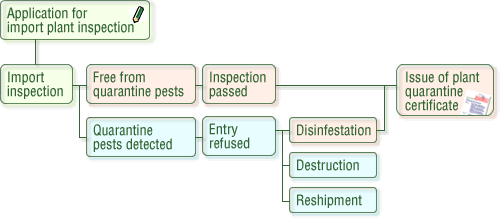 |
 |
 |
 |
|
Plants and plant products are imported from foreign countries by means of freight, personal luggage and parcel post etc. They are subject to plant quarantine to prevent a possible invasion of pests which may be inhabiting these plants. It is stipulated by Japanese law that a phytosanitary certificate issued by the authorities of the exporting country be attached to the plants, that a certain seed crops be inspected at growing site in exporting country and that these plants be imported through designated ports of entry. Import plants are classified into three categories : 1; Import-banned items, 2; Items subject to quarantine, 3; Items not subject to quarantine.
|
 |
|
Import-banned items
This category covers the following items : 1; Plants shipped from a region where there are pests which have not yet occurred in Japan and could cause serious damage to crops and forest resources, 2; Pests and plant pathogens, 3; Soil, 4; Plants stuck with soil.
Items subject to quarantine
This category covers the plant items other than import-banned but which are inspected upon entry.
It involves a wide range of plants such as seedlings, ornamental plants, cut-flowers, bulbs, seeds, fruits, vegetables, grains, beans, logs, spice crops, herbs etc.
Items not subject to quarantine
No inspection is required for some highly processed items such as lumber, tea and the like.
|
 |
|
Imported plants are commonly inspected for quarantine pests. If plants could possibly bear serious pests, they are inspected more closely. If any quarantine pests are found at the inspection, measures are taken on the consignment such as sterilization, sorting, elimination of the pests or destruction (incineration) of the plants. Recent progress in marine containerization and air freight services has made it possible to import large quantities of fresh fruits and vegetables from abroad.
|
 |
 |
|
Cargo inspection at seaports
|
 |
 |
|
Import inspection of maize
|
|
 |
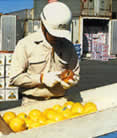 |
|
Import inspection of grapefruit
|
|
 |
Cargo shipments are roughly divided into two types, i.e.bulk cargo and container cargo. Plant items shipped in bulk are grains, fresh fruits, vegetables, logs etc. Those for containerized shipments involves fresh fruits, vegetables, cut-flowers, bulbs, seeds etc. The inspection is carried out on board, at warehouse, container yard and/or log yard.
|
|
 |
 |
|
Cargo inspection at airports
|
 |
|
|
 |
 |
|
Quarantine of seed and seedling crops
|
 |
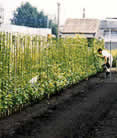 |
|
Post-entry inspection at isolated farm
|
|
 |
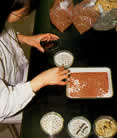 |
|
Laboratory testing of imported seeds
|
|
 |
Besides the inspection at ports of entry, bulbs and fruit nursery plants are grown at an isolated farm for approximately one year and examined closely by various techniques such as inoculation test, serological test etc. The purpose of this post-entry quarantine is to check for viruses and other harmful pests which cannot be detected in the ordinary port-of-entry inspection. For some seed crops for which quarantine pests are hardly detectable on imported seeds, field inspection for the pests is required during the growth period in exporting country.
|
|
 |
 |
|
Quarantine on hand luggage
|
 |
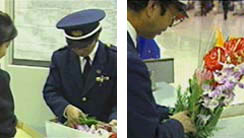 |
|
Inspection of traveller's hand luggages
|
|
 |
Inspection procedures on incoming travellers are as follows : quarantine, immigration, plant quarantine, animal quarantine and customs inspection. Prior to the customs inspection, the plant quarantine is conducted on hand luggages in customs at the entry port.
|
|
 |
 |
|
Quarantine on postal matters
|
 |
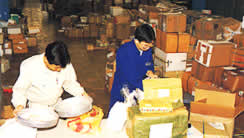 |
|
Inspection of postal matters from abroad
|
|
 |
Plant imports by mail are only allowed with parcel post and small packages. The inspection is done at the customs house in the presence of a postal clerk. Items passing the inspection are delivered to the addresses.
|
|
 |
| Back to Functions of plant protection stations |
 |
